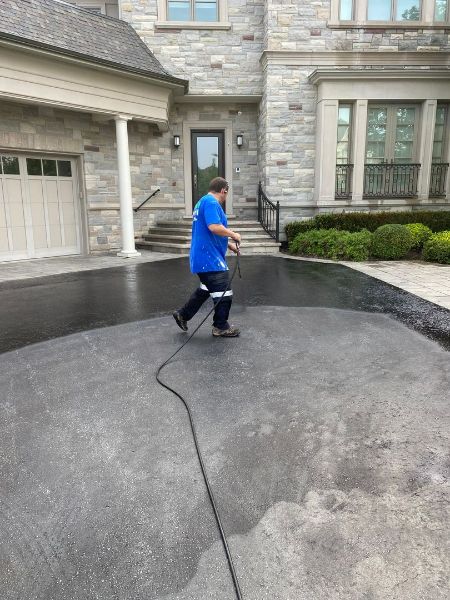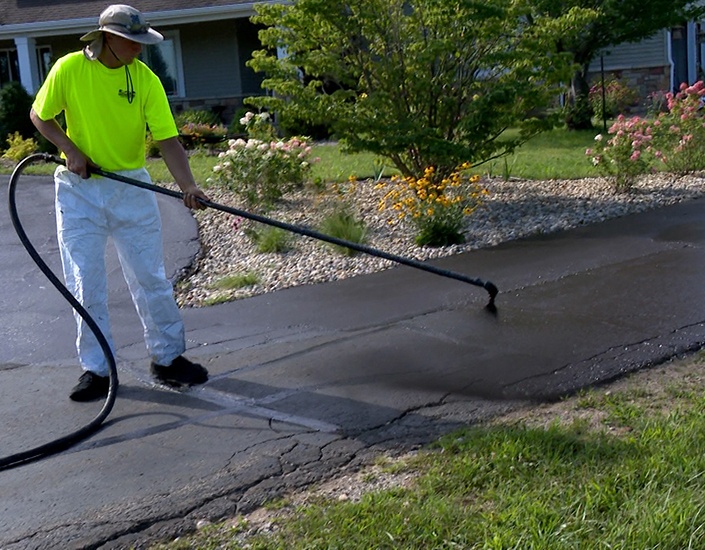Durable Results: Asphalt Spot Repair Through Accuracy Sealing
Durable Results: Asphalt Spot Repair Through Accuracy Sealing
Blog Article
Cold Mix Asphalt Vs. Hot Mix Asphalt: Which Is Right for You?

Structure Distinctions
Cold mix and hot mix asphalts differ significantly in their structure, with distinctive features that impact their performance and applications. Cold mix asphalt is created by emulsifying the asphalt binder with water and an emulsifying representative prior to blending it with aggregate. This technique permits for the asphalt to be workable at lower temperatures, making it perfect for momentary fixings and for use in chillier climate condition. Hot mix asphalt, on the various other hand, is made at high temperatures, normally in between 300-350 ° F, which helps to achieve better compaction and a much more sturdy end product. The hot mix asphalt production procedure entails warming the accumulation and asphalt binder independently prior to combining them at the asphalt plant.
Furthermore, chilly mix asphalt tends to be much less thick and a lot more versatile than warm mix asphalt. This adaptability makes it better matched for areas with greater degrees of activity, such as driveways or roads with rush hour. On the other hand, hot mix asphalt is known for its high longevity and resistance to rutting and breaking, making it a favored choice for highways and high-traffic roads where longevity is critical.
Installment Refine Differences
The procedure of mounting cold mix and warm mix asphalt exhibits significant variations in their requirements and procedures. Cold mix asphalt, being an extra adaptable product, can be used directly from the bag or container onto the pothole or damaged location. It needs minimal preparation work, such as cleaning up the area and compacting the cool blend with hand tools. This makes it a convenient alternative for fast and momentary repairs. On the other hand, warm mix asphalt requires an extra intricate installment process. It includes heating up the mixture to heats before laying it down on an appropriately prepared base. The prep work consists of condensing the base, using a tack layer, and utilizing heavy equipment like pavers and compactors for a sturdy and smooth surface. Because of the heating needs, warm mix asphalt setups are usually performed by specialists with customized equipment, guaranteeing a much more long-term and structurally audio result.
Durability and Long Life Variables
When taking into consideration asphalt alternatives, longevity and long life are critical variables to examine for long lasting pavement performance. Hot mix asphalt (HMA) is understood for its phenomenal toughness and longevity.
In terms of longevity, HMA commonly exceeds CMA because of its remarkable toughness and resistance homes. HMA pavements have a longer life span, requiring less regular repairs and upkeep, which can convert to set you back financial savings in the long run. Additionally, HMA sidewalks are a lot more easily personalized to meet certain task requirements, additionally improving their toughness.
Price Considerations
Taking into consideration the financial ramifications is an important facet when examining the option in between hot mix asphalt (HMA) and cold mix asphalt (CMA) for sidewalk projects. While the first price of hot mix asphalt is generally more than that of cool mix asphalt, HMA typically offers a more economical remedy over time because of its remarkable resilience and long life. HMA is recognized for its ability to withstand rush hour tons and harsh climate condition, minimizing the demand for regular fixings and maintenance. On the various other hand, chilly mix asphalt is much more cost effective ahead of time however may need even more constant patching and resurfacing, bring about greater upkeep expenses over time.
In addition to product expenses, it's necessary to take into consideration the expenditures related to installation and upkeep when contrasting HMA and CMA. HMA generally requires specific equipment and experienced labor for appropriate installment, which can influence total job costs. On the other hand, CMA is much easier to collaborate with and can usually be applied using less complex strategies, possibly reducing installment costs. Eventually, the decision in between HMA and CMA need to consider not simply the first cost but additionally the long-lasting monetary ramifications to identify the most cost-efficient choice for the details pavement task.
Environmental Impact Contrast
Comparison of the environmental effects in between hot mix asphalt (HMA) and cold mix asphalt (CMA) reveals unique differences in sustainability methods. HMA manufacturing calls for high temperatures, resulting in raised energy consumption and greenhouse gas discharges. The process additionally launches unstable organic compounds (VOCs) and harmful air contaminants (HAPs) into the environment. In contrast, CMA is produced and applied at reduced temperatures, reducing energy usage and discharges considerably. The lower production temperature levels of CMA cause reduced fuel intake and reduced levels of carbon dioxide discharges, making it a more eco-friendly alternative.
In site link addition, using CMA frequently includes recycling existing asphalt pavement, advertising resource conservation and decreasing the quantity of waste sent out to landfills. This reusing facet better boosts the sustainability of CMA compared to HMA. In general, when taking into consideration the environmental influence, CMA home emerges as a more eco sustainable selection because of its reduced energy requirements, lowered discharges, and the potential for recycling existing materials. By choosing CMA over HMA, roadway building projects can add favorably to ecological preservation initiatives.
Conclusion
In final thought, the choice in between chilly mix asphalt (CMA) and warm mix asphalt (HMA) depends on numerous elements such as structure, setup process, sturdiness, durability, price, and ecological impact. asphalt repair. While CMA uses a fast and cost-effective solution for small repair work, HMA makes certain premium toughness and longevity for heavy web traffic areas. Think about these aspects meticulously to figure out which sort of asphalt is the best choice for your paving needs

Thinking about the monetary ramifications is a crucial element when evaluating the option in between hot mix asphalt (HMA) and chilly mix asphalt (CMA) for pavement jobs. While the first price of warm mix asphalt is commonly greater than that of cool mix asphalt, HMA usually gives an extra cost-effective service in visit the website the long run due to its exceptional durability and long life. angle parking.Comparison of the ecological influences in between warm mix asphalt (HMA) and cold mix asphalt (CMA) exposes distinct distinctions in sustainability practices.In final thought, the choice between cool mix asphalt (CMA) and hot mix asphalt (HMA) depends on different aspects such as make-up, installation procedure, longevity, longevity, cost, and environmental impact
Report this page